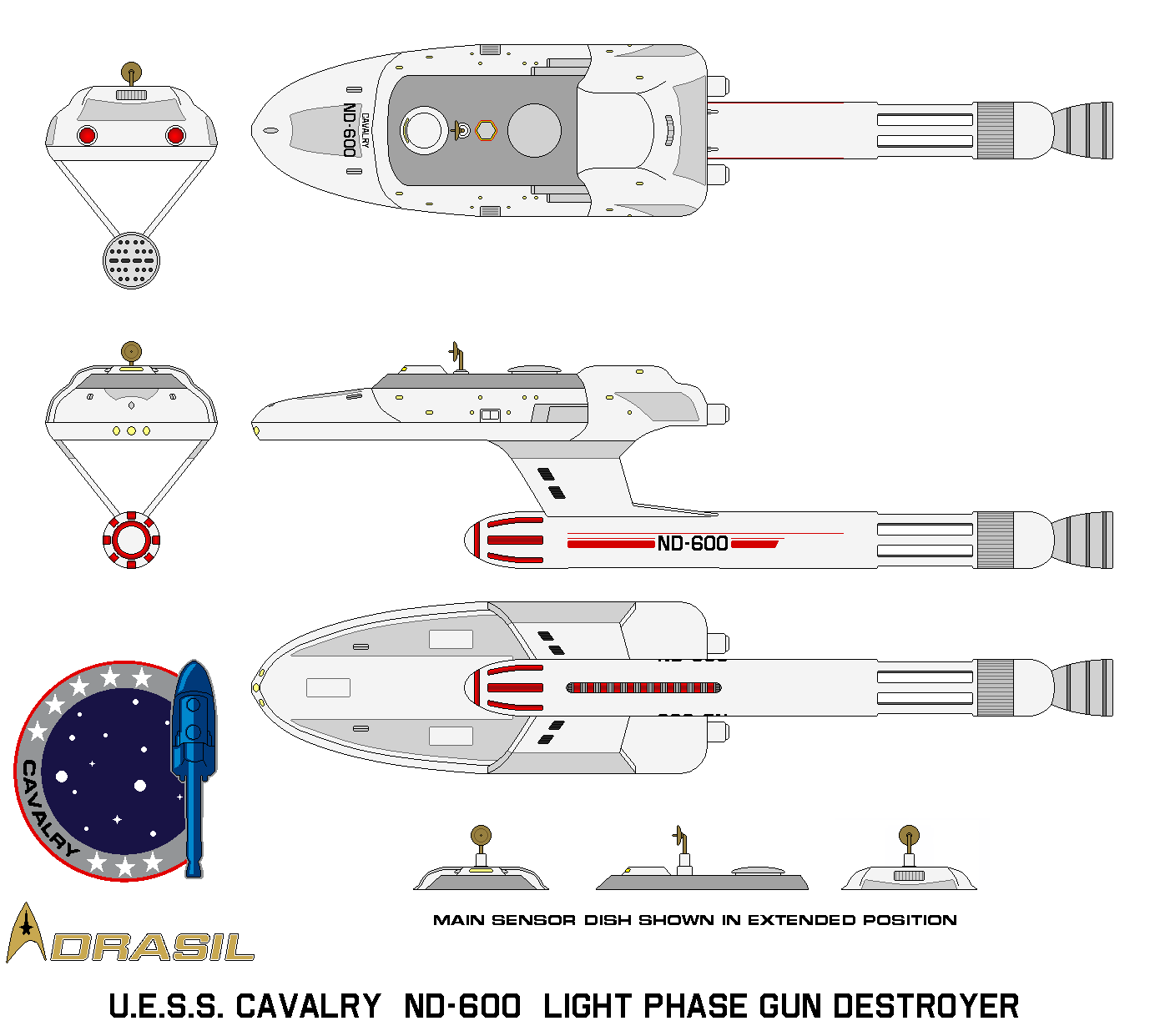HOME | DD
 RevancheRM — Cavalry class light phase gun destroyer (2151)
RevancheRM — Cavalry class light phase gun destroyer (2151)

#starfleet #startrekstarship #timosaloniemi
Published: 2020-04-21 12:52:41 +0000 UTC; Views: 2432; Favourites: 18; Downloads: 30
Redirect to original
Description
This series on the Cavalry class includes the following variants: Strachan subclass light torpedo destroyer (2153) , Mars subclass light torpedo destroyer (2154) , Turing subclass light destroyer (2160) , Turing subclass light destroyer (UFP livery) (2161) .
Image provided by: Adrasil
Original inspiration from: The Federation (FASA), Spaceflight Chronology (Stan & Fred Goldstein & Rick Sternbach)
History from: Hobbyist's Guide to the UFP Starfleet, by Timo Saloniemi
Variant blueprints: Access via Adrasil's Download button
Featured in: Starship Recognition Manual #299
The durable maxim that generals are always prepared to fight the last war holds true with the proposal, design, and production of the Cavalry light phase gun destroyers. This is not to be read as an admonishment of that decision, though the vessels could barely operate even as chaff against the later Romulan threat of the 2150s. Instead, it is an acknowledgment of the defensive concerns of the United Earth Starfleet in the 2140s.
In that period, the most urgent requirement for Earth and her then-major colonies were ships to serve in what were essentially police operations to quell the irksome raids of the Kzinti, a blustering feline race with origins to the (then-unknown) Xindi civilization of the Delphic Expanse. The UESF had developed and placed a great deal of faith in cruisers armed and armored with the most cutting-edge technology currently available to Humans, in order to protect ships of the Earth Cargo Authority and United Earth Space Probe Agency. This demand on the heavier vessels meant that system defenses either relied on patrol cutters—often without the capacity to bring heavier weapons to bear—or cruisers that happened to be system-adjacent, not a scenario any planetary administration would accept.
Tactical scenarios also envisioned a potential alien invasion to be predicated upon a large starship—such as made familiar with the Vulcan voidships—which would best be countered by multiple interceptors armed with forward-facing heavy weaponry conducting constant and coordinated strikes. As these vessels would not need to be focused on interstellar missions, they would have no distance nor FTL requirements of the deep-space explorers and cruisers, nor anti-fighter weaponry often required for the counter-piracy roles of convoy duty.
Hence, the Cavalry class light phase gun destroyer was designed to carry four 6-gigawatt plasma cannons on the bow, with a heavy Type A phased particle cannon in the 500-gigawatt range, centered on the bow as well. Heavy polarizable armor was embedded on the dorsal fore to allow lined-up strike approaches, and on the ventral side, as protection during the violent banking maneuvers away from the attack run. The warships had one S65 ventral nacelle powered by the S66-D fusion reactor via two sturdy pylons, with a maximum capacity of warp 3.1, more than enough to allow system patrollers to form up for interception runs. The subspace matrix normalizer was deemed a necessary addition to the nacelle itself, as a formation of closely-maneuvering starships would cause localized tetryons to behave chaotically, impacting the stabilization of warp fields on the trailing ships. The waste delta radiation from the normalizer dictated a position as far as possible from inhabited interiors; the open frame just forward of the device helped to reduce unnecessary mass.
The crew of 84 “enjoyed” an intimate operational environment, as the narrow hull had to hold all departments’ equipment in a fore-to-aft configuration necessary to restrict the beam perspective. There was enough room on the dorsal stern to support a two-pod shuttlebay with aft entry, a much more tolerant design than the ventral bay of the Enterprise class explorer that debuted the same year. The two dual-use airlock/docking ports located on opposing sides of Deck 3 and the lifepod station on the dorsal midsection comprised the entirety of embarkation points, until the first inclusion of a single-person transporter in 2156. Though equipped and supplied for an endurance of 2 years, the “mission range” reflected more upon the lack of capacity of some colonies to support their defenders.
Would you like to learn more about this class of ship? Download the free Hobbyist's Guide to the UFP Starfleet , a three-volume, 1236-page history of space flight, by Timo Saloniemi.
For an extremely rich gallery of Star Trek starships and vessels from other universes, check out my partner, Adrasil , here on DeviantArts.
Related content
Comments: 11

👍: 0 ⏩: 1

👍: 1 ⏩: 0

👍: 0 ⏩: 1

👍: 0 ⏩: 0

I thought you might. Three more of the series to come.
👍: 1 ⏩: 1

👍: 1 ⏩: 1

You shoulda saved that for yours, tomorrow!
👍: 2 ⏩: 0

Thanks for the appreciation, MarcusStarkiller.
👍: 0 ⏩: 0




























